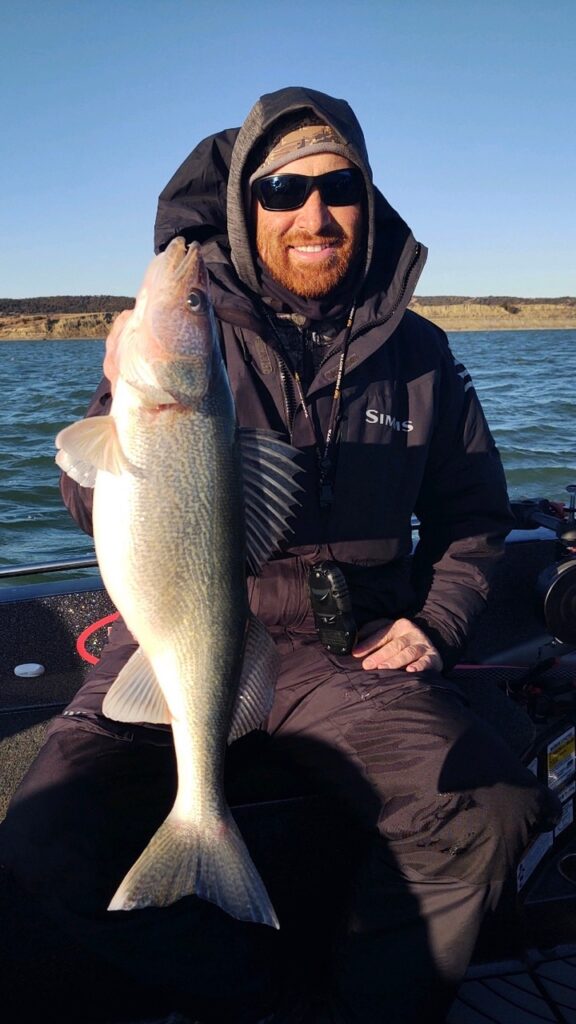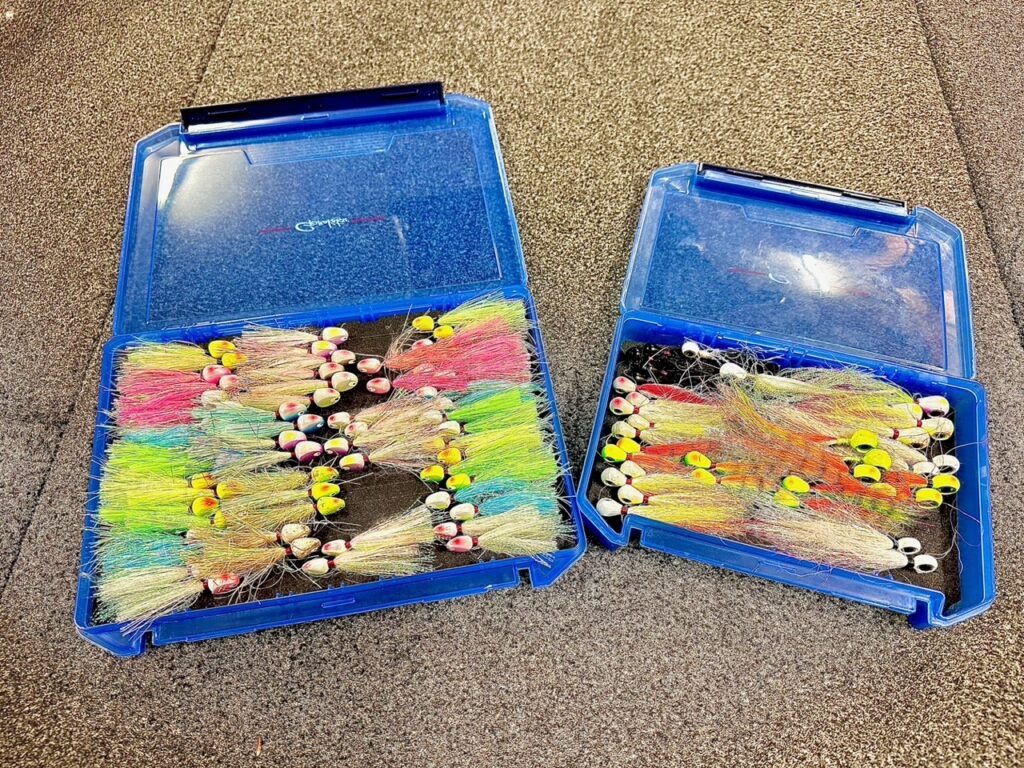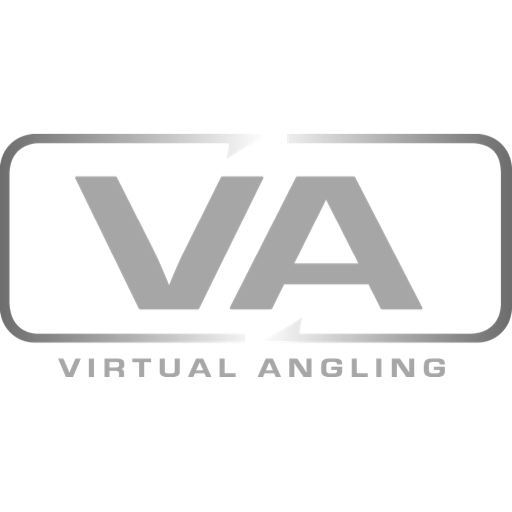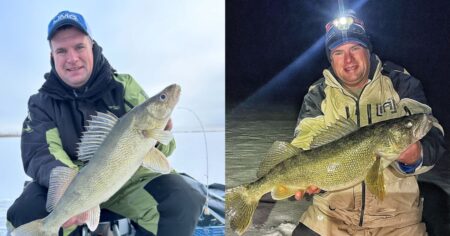
Seems like over the past few years everyone’s become hip to fishing hair jigs for walleyes, many with a great deal of frustration. Whether you’re working them in warm water or trying to produce the catch rates you’ve heard of during cold-water river periods, it’s a system that has to be refined through a lot of trial and error.
Hair Jigs for Walleyes: A Brief History
Modern walleye hair jig fishing begins with Dick “The Griz” Gryzwinski, the legendary, Minnesota-based river rat and northern-wandering walleye guide—who at 81 years old is still on the water nearly every day of the open-water season.
According to Griz, he learned to rip hair jigs for walleyes from his dad around 1960. Although they tried to keep things quiet, with net out as often as it was, the duo soon became legendary around the Lake Winnibigoshish region for fishing circles around local guides.
The Griz’ original, hand-tied “Griz Jig” was fashioned out of chicken feathers (“because that’s what we had”) and he’d pound self-poured, ¼-ounce jig heads into a pill-shape presumably for more hydrodynamics, although he’d never use that word. They just caught more fish.
While Griz used to guide on Mississippi Pools 2-4 throughout the entire winter, he says at his age he’s “just not that damn mad at the fish anymore.”
But even the Griz limited most of his hair jig fishing to ice-up to ice-out—and primarily on lakes. He has decades-worth of tricks up his sleeve when it comes to producing cold-water waldos.
Hair Jigs Today

These days, anglers are fishing hair on walleye-holding rivers late-fall through post-spawn—and for those who know how to fish ‘em—are putting on absolute fish-catching clinics some days when other methods produce only a few fish.
One such angler is Woonsocket, South Dakota-based NWT walleye pro, Duane “Dewey” Hjelm. A super nice guy, Dewey filled Virtual Angling in with the juice on his cold-water hair jig program.
“The key to catching more cold-water river walleyes is fishing any bait ultra-slow,” shares the 2022 NWT Angler of the Year.
“With hair jigs, it’s a simple pull of the rod tip so you aren’t even pulling the bait off bottom—it’s more of a drag. And if that isn’t working, try short little snaps. That’s where I like a 7’3” medium-light, extra-fast rod. At that length and action, all you need is a slight flick of the wrist to get the bait an inch or two off the bottom—which is the strike zone. So, that’s how I work my hair jigs in cold water. It’s either a really slow pull along bottom or short, little snaps.”
When To Fish Hair Jigs In Cold Water
Dewey starts fishing hair jigs in the fall when the river water temps drop, all the way through open-water in winter, and right up to the end of the walleye spawn.
“For me, I stop fishing hair when the water temp hits about 50 degrees. Really, the best time to fish them is when walleyes are shut off in the middle of winter right up to the actual spawn.”
Hair Jig Choice

While a lot of diehards will tie their own walleye hair jigs with different materials in assorted lengths and colors and with varied jig head sizes (often ‘tweener sizes like 3/16- and 5/16-ounce), Dewey gravitates to VMC MTJ Moontail Jig, BKJ Bucktail Jigs, and Hot Skirt Jigs right-out-of-the-package in 1/8- to 3/8-ounce.
“While I carry a lot of sizes, I’m pitching ¼-ouncers most of the time, which work in a variety of depths and current situations.”
Color, Line Choice, & Casting Angles
On his Missouri River home-waters with its generally clear conditions, Dewey opts for pitching forage-matching hair jigs, whether that means white, white and black, or blue and white. When he’s fishing dirty water, Dewey grabs for rods rigged with black, firetiger, and other bright patterns. He also like the flashabou, tinsel, and glow options in the Hot Skirt Jig family.
In terms of line, Dewey’s proven system comprises 10-lb. braid tied to a 3- to 4-foot 10- to 12-pound fluorocarbon leader.
“If the fish are really on, you can cast up-current and catch them bringing the bait toward you, or at 90-degrees off the back of the boat,” says Dewey.
“But the best, fish-producing cast with a hair jig is at 45-degrees. Then, even the tiniest rod motion will swing the bait just off the bottom toward the back toward the boat. That’s when I get bit the most,” concludes Dewey.




